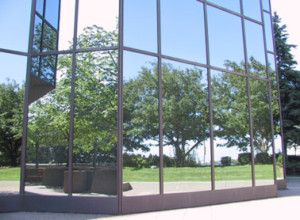Fatal attraction: Stadium a ‘death trap’ for birds?

By Tom Steward | Watchdog Minnesota Bureau
MINNEAPOLIS, Minn. — It’s one thing to take down Eagles, Seahawks and Falcons on the playing field, but the Minnesota Vikings and National Football League face a blitz of criticism for a nearly $1 billion stadium in the works that nature lovers call a “death trap” for real birds.
Critics warn the stadium’s enormous glassy exterior will reflect the sky, turning it into a fatal attraction for thousands of birds a year.
“We think it’s a travesty to use birds to advance your brand and then kill them over what amounts to pocket change for your organization,” said Dr. Christine Sheppard, bird collisions campaign manager for the American Bird Conservancy, in a statement.
Surveys show 125 species of migratory birds have been grounded permanently in the last few years by crashing into the windows of Twin Cities’ office buildings. Environmental groups say thousands more federally protected fowl will die unnecessarily due to what amounts to a killer stadium underwritten in part by $500 million in local and state taxpayer funding.
DEATH TRAP: Conservationists say the NFL and MN Vikings could avert much of the danger for bird collisions by spending $1.1 million on less reflective bird-safe glass.
“The new Minnesota Vikings stadium is primed to become one of Minnesota’s biggest bird killers unless quick action is taken,” states an alert from the National Audubon Society’s action center. “…The planned building features nearly 200,000 square feet of glass (that’s 4 football fields of glass walls!) and is sited near a major bird migration pathway along the Mississippi River corridor. This decision is a death warrant for birds.”
The American Bird Conservancy piled on, sending a July 29 letter to NFL Commissioner Roger Goodell requesting a meeting to discuss ways of mitigating the threat posed by a stadium scheduled to debut in 2016. So far, however, the conservation group’s attempt appears to be a Hail Mary play with no apparent public response from the league or to a Watchdog Minnesota Bureau inquiry.
“I write to express our concern about the refusal of the Minnesota Vikings and the Minnesota Sports Facilities Authority to modify plans that are expected to kill thousands of America’s native birds over the life of the soon to be built Minnesota Vikings Stadium,” said Darin Schroeder, ABC vice president, in the letter. “…Since birds play an important role in the National Football League (Philadelphia Eagles, Arizona Cardinals, Atlanta Falcons, Baltimore Ravens, Seattle Seahawks), we are confident you will work with us to minimize this unnecessary threat to birds.”
Audubon also launched an online petition aimed at sending 65,000 letters — one for each seat in the new stadium — to pressure the home team and Metropolitan Sports Facilities Commission. At last count, more than 47,600 Audubon supporters had already submitted a blunt form letter urging the team and officials to switch to bird-safe glass before it’s too late in the construction process.
COLLATERAL DAMAGE: Critics warn the Vikings new stadium will unnecessarily add to the thousands of birds killed in collisions with buildings like these fatalities collected in Toronto.
Calling an audible in the design plan would increase the cost of the glass-encased stadium by an estimated one-tenth of one percent of the construction budget, or $1.1 million.
“The same glass that will help save birds will also help save energy, offsetting the cost over time. It’s a win—win—win. It’s as clear as glass,” said Matthew Anderson, Audubon Minnesota executive director, in a statement.
The dangers posed by the stadium’s towering sheet of glass were the subject of discussions for a year between Audubon, the Vikings and officials from the Minnesota Sports Facilities Authority. The team agreed to implement a fowl-friendly lighting plan, but punted on installing different glass.
“Stadium construction costs continue to rise, and unfortunately the budget does not include the additional cost required by the Audubon Society’s recommended glass,” according to a Minnesota Vikings statement. “We will continue to partner with the MSFA to enhance bird safety through the lighting design and operational guidelines.”
The MSFA official who helped power stadium funding through the Minnesota Legislature as Gov. Mark Dayton’s deputy chief of staff also ruled out a last-minute substitution for bird-friendlier glass.
“The new stadium design and budget were completed prior to conversations with the Audubon Society. The design was also completed prior to changes in state guidelines related to bird-safe glass,” said Michele Kelm-Helgen, MSFA executive director in a statement. “One of the design goals was to create a building that was more connected and integrated with the community than the Metrodome had been.”
The Minneapolis City Council passed an Aug. 1 resolution condemning the expected loss of bird life. Yet city officials remain on the sidelines, declining to bolster the $150 million in local sales taxes already kicked in for a stadium with a fatal attraction for winged wildlife.







